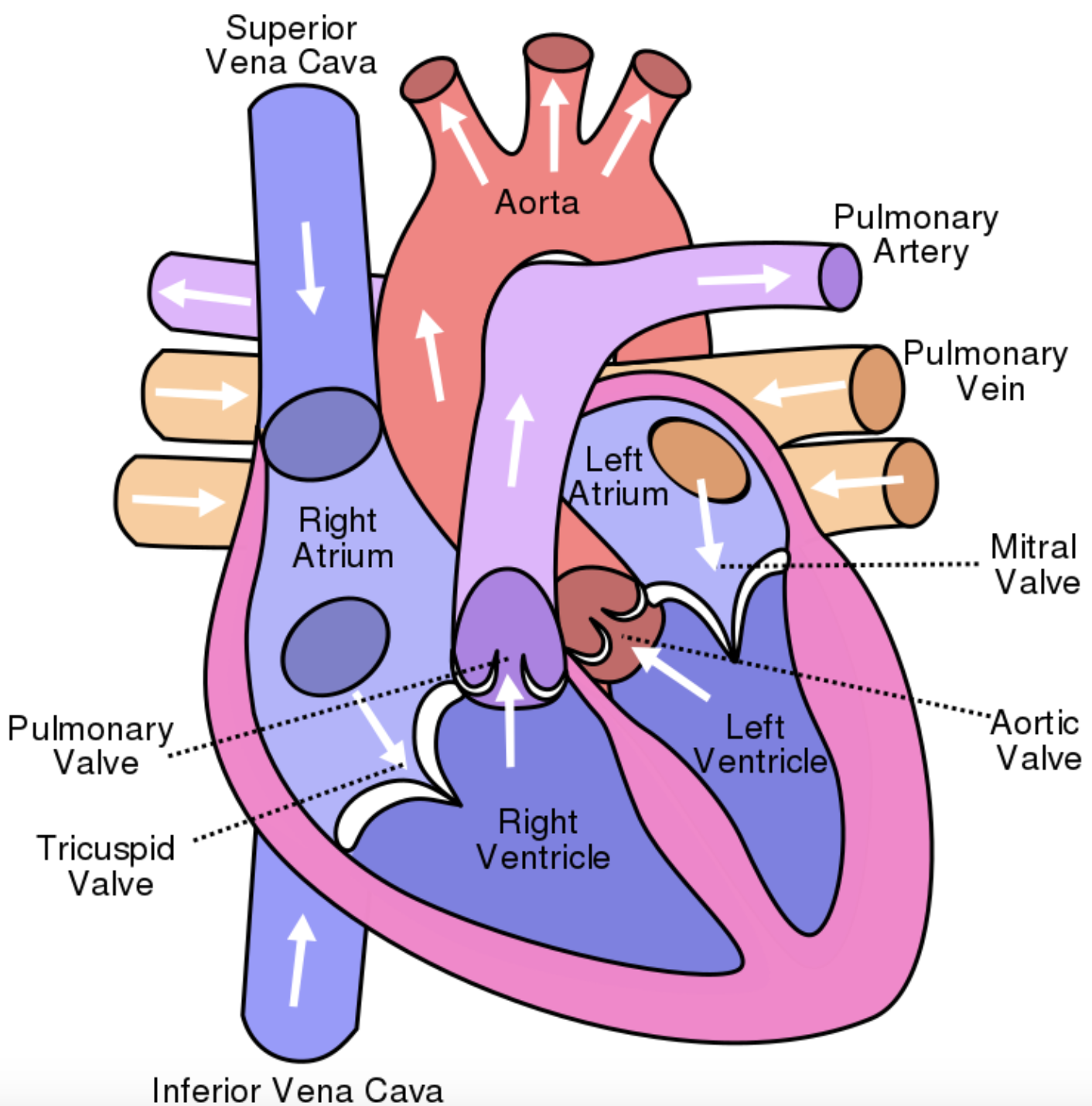
Mitral valve is found between
(a) Right auricle and right ventricle
(b) Left auricle and left ventricle
(c) Right auricle and pulmonary artery
(d) Left ventricle and aorta
Answer
571.8k+ views
Hint: Mitral valve is a bicuspid valve meaning it comprises two cusps or flaps. The human heart is divided into four chambers i.e., right auricle, left auricle, right ventricle, and left ventricle. The right side of the heart- right auricle takes blood from all parts of the body and transfers it to the right ventricle from where it goes to the lungs so there is more pressure as compared to the left side of the heart from where purified blood is transported to all parts of the body.
Complete step by step answer:
Mitral valve is found between the left auricle and left ventricle. The Mitral valve comprises two cusps or flaps and thus it is also called a bicuspid valve. It prevents the backflow of blood from the left ventricle to the left auricle. The cusps are held in position by chordae tendineae which are inelastic tendons attached at one end to papillary muscles in the left ventricle.

So, the correct answer is `Left auricle and left ventricle`.
Additional information:
- Right auricle receives blood from all parts of the body via the inferior and superior vena cava. It passes unpurified blood to the right ventricle. The tricuspid valve is found between the right auricle and right ventricle that prevents the backflow of blood from the right ventricle to the right auricle.
- Blood is then transferred to the lungs via a pulmonary artery(unpurified blood) and it is returned to the left auricle via a pulmonary vein (purified blood).
- Purified blood is then transferred to the left ventricle. A Mitral valve or bicuspid valve is found between the left auricle and the left ventricle. Then purified blood is distributed to all parts of the body via the aorta.
Note: Chordae tendineae connects the papillary muscles to the valves in the heart. Papillary muscles are present in ventricles and they contract to prevent inversion of these valves during systole. Semilunar valves present at the base of the aorta prevents the backflow of blood into the ventricles. Thus, valves have the primary function to prevent the backflow of blood to a chamber from where it was transferred.
Complete step by step answer:
Mitral valve is found between the left auricle and left ventricle. The Mitral valve comprises two cusps or flaps and thus it is also called a bicuspid valve. It prevents the backflow of blood from the left ventricle to the left auricle. The cusps are held in position by chordae tendineae which are inelastic tendons attached at one end to papillary muscles in the left ventricle.

So, the correct answer is `Left auricle and left ventricle`.
Additional information:
- Right auricle receives blood from all parts of the body via the inferior and superior vena cava. It passes unpurified blood to the right ventricle. The tricuspid valve is found between the right auricle and right ventricle that prevents the backflow of blood from the right ventricle to the right auricle.
- Blood is then transferred to the lungs via a pulmonary artery(unpurified blood) and it is returned to the left auricle via a pulmonary vein (purified blood).
- Purified blood is then transferred to the left ventricle. A Mitral valve or bicuspid valve is found between the left auricle and the left ventricle. Then purified blood is distributed to all parts of the body via the aorta.
Note: Chordae tendineae connects the papillary muscles to the valves in the heart. Papillary muscles are present in ventricles and they contract to prevent inversion of these valves during systole. Semilunar valves present at the base of the aorta prevents the backflow of blood into the ventricles. Thus, valves have the primary function to prevent the backflow of blood to a chamber from where it was transferred.
Recently Updated Pages
The number of solutions in x in 02pi for which sqrt class 12 maths CBSE

Write any two methods of preparation of phenol Give class 12 chemistry CBSE

Differentiate between action potential and resting class 12 biology CBSE

Two plane mirrors arranged at right angles to each class 12 physics CBSE

Which of the following molecules is are chiral A I class 12 chemistry CBSE

Name different types of neurons and give one function class 12 biology CBSE

Trending doubts
One Metric ton is equal to kg A 10000 B 1000 C 100 class 11 physics CBSE

What is 1s 2s 2p 3s 3p class 11 chemistry CBSE

Discuss the various forms of bacteria class 11 biology CBSE

State the laws of reflection of light

Explain zero factorial class 11 maths CBSE

An example of chemosynthetic bacteria is A E coli B class 11 biology CBSE




